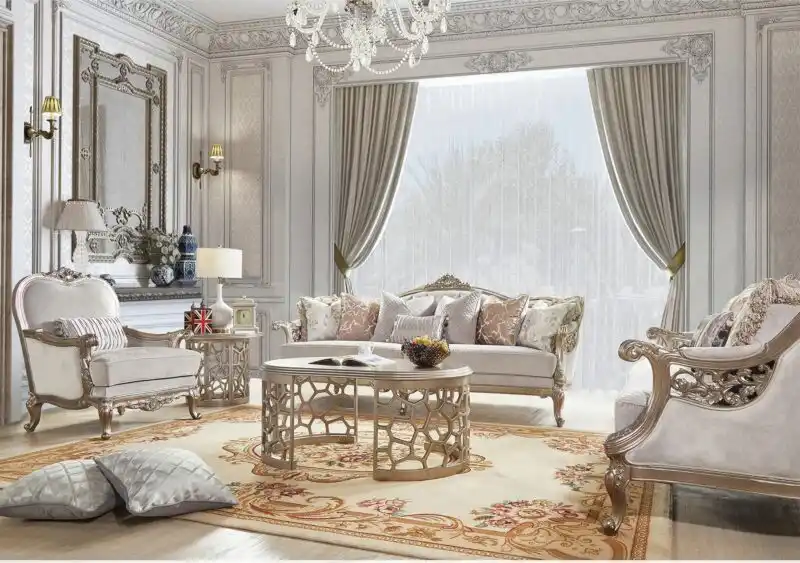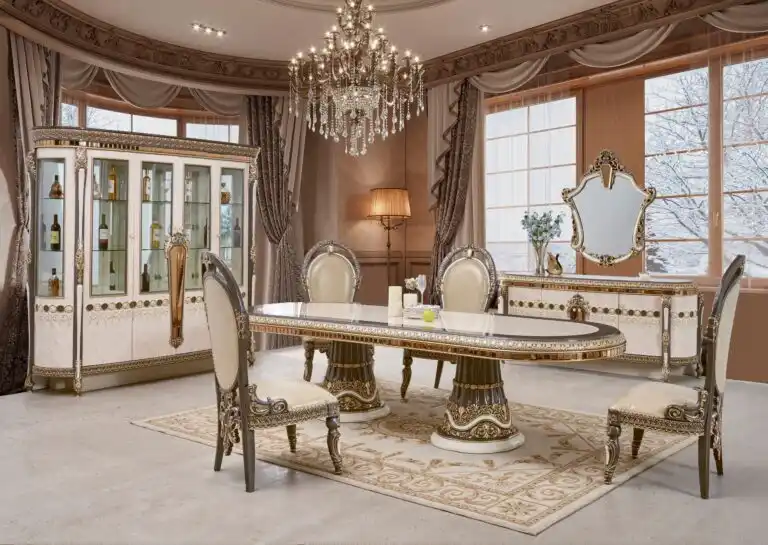A Fresh Perspective on Luxury Furniture: Trends, Insights, and Market Dynamics

A Fresh Perspective on Luxury Furniture: Trends, Insights, and Market Dynamics
Luxury furniture has evolved beyond being merely decorative to become a symbol of craftsmanship, quality, and innovation. In a rapidly changing world, the definition of what makes furniture “luxurious” is continuously shifting. Modern consumers are prioritizing sustainability, design flexibility, and personalization. With market demand expanding and preferences evolving, understanding the key factors driving this market brands like homey design and other brands is essential for both consumers and industry players.
What is Luxury Furniture?
Luxury furniture is characterized by high-quality materials, exceptional craftsmanship, and exclusive designs that cater to a discerning audience. These pieces often serve as both functional elements and works of art in the home. Unlike mass-produced items, luxury furniture often features limited availability, ensuring rarity and unique value. Additionally, it may involve custom designs or intricate details that set it apart from more commonplace options.
The Expanding Luxury Furniture Market
The global luxury furniture market has been experiencing rapid growth. According to industry reports, it is expected to reach significant milestones, driven by several key factors:
Consumer Demand: As disposable incomes increase, more people are looking for investment pieces that enhance their living spaces. The growing middle class, particularly in regions such as Asia and North America, is significantly contributing to this surge in demand.
Sustainability and Ethical Production: Sustainability is no longer just a trend; it’s a core value. Luxury furniture brands are responding to consumer concerns about the environment by using eco-friendly materials, ethical manufacturing processes, and sustainable sourcing practices.
Technological Integration: With the rise of smart homes, luxury furniture is incorporating technological elements. From sofas that feature built-in wireless charging stations to coffee tables with integrated sound systems, consumers are increasingly seeking furniture that combines design with functionality.
Online Expansion: As more consumers shop online, digital platforms have become essential for selling high-end furniture. Virtual showrooms and interactive design tools are now common, allowing consumers to explore luxury options without ever stepping foot in a store.
Projected Market Growth
The luxury furniture market is poised to grow at a rate of 5.16% CAGR over the next few years, with projections suggesting it could surpass USD 9 billion by 2028.
This growth is further fueled by changing consumer tastes, the increase in luxury real estate developments, and the desire for high-quality, durable furniture.
Key Trends Shaping Luxury Furniture

1. Sustainable Design Choices
Sustainability has taken center stage in the luxury furniture industry. Consumers are increasingly aware of their environmental impact and are opting for products that align with their values. This includes choosing pieces made from responsibly sourced wood, recycled metals, and natural, biodegradable finishes. Luxury furniture companies are also innovating in their production methods, seeking to minimize waste and carbon footprints.
2. Functionality Meets Luxury
Gone are the days when luxury was simply about opulence and extravagance. Today, functionality plays a significant role in defining luxury. Multi-purpose furniture that combines style with practicality, such as modular storage solutions, space-saving designs, and convertible tables, is in high demand. Consumers are looking for pieces that cater to their modern, fast-paced lifestyles while still adding elegance and refinement to their homes.
3. Personalization and Customization
The desire for individuality is driving the demand for customized luxury furniture. Consumers now expect to be able to personalize their furniture choices, whether that’s selecting specific materials, finishes, or even designs tailored to their preferences. As a result, many high-end furniture manufacturers are offering bespoke services, allowing clients to collaborate directly with designers to create truly one-of-a-kind pieces.
4. Tech-Infused Furniture
Smart technology is becoming a defining feature of modern luxury furniture. This includes everything from beds with built-in massaging functions to tables that can control home lighting systems. Furniture brands are incorporating features that enhance the user experience, creating seamless integration between style, comfort, and technology.
Key Market Segments in Luxury Furniture
The luxury furniture market is diverse, with various segments catering to different consumer needs. The market can be divided into:
Material-Based Segmentation
Wood remains a primary material for luxury furniture due to its timeless appeal and versatility. However, metals such as stainless steel and brass, alongside glass, are becoming increasingly popular in contemporary designs. This shift is driven by consumer preference for sleek, modern aesthetics that still maintain the high-quality standards expected from luxury items.
End-Use Segmentation
Residential Use: The residential segment remains the largest consumer base for luxury furniture, with individuals looking to elevate their home decor and create a refined living space. Custom sofas, elegant dining tables, and bespoke storage solutions are popular choices for homeowners seeking exclusivity.
Commercial Use: High-end hotels, corporate offices, and upscale restaurants are also major consumers of luxury furniture. These commercial spaces often demand unique pieces that make a statement, with emphasis on both comfort and visual appeal.
Distribution Channels
While physical showrooms continue to be an important touchpoint for luxury furniture sales, online retail has seen significant growth. E-commerce platforms now offer interactive tools to allow customers to visualize furniture in their homes before making a purchase, making it easier than ever to shop for high-end pieces from the comfort of their own space.
The Role of Homey Design in the Luxury Furniture Market
One notable trend in the market is the rise of companies that combine elegance with innovation. Homey Design, a conceptual furniture brand, exemplifies the increasing demand for pieces that marry sophistication with practicality. Their collection offers everything from modular seating to opulent armchairs, designed with the contemporary consumer in mind. This brand’s commitment to high-quality craftsmanship and sustainable practices resonates with today’s luxury shopper, who values both style and ethical production.
Why Invest in Luxury Furniture?
Luxury furniture offers numerous advantages, making it a worthwhile investment for many consumers:
Quality and Durability: The primary appeal of luxury furniture lies in its craftsmanship. These pieces are built to last, often using materials that are far more durable than their mass-produced counterparts. The longevity of luxury furniture ensures it remains valuable over time.
Timeless Aesthetic: Luxury furniture often features classic designs that won’t go out of style. This long-term appeal ensures that your furniture will remain relevant even as trends change.
Increased Property Value: High-end furniture can add substantial value to a home, particularly when paired with other luxury interior design elements. Buyers are willing to pay a premium for homes that are tastefully furnished with quality furniture that reflects their status.
The Future of Luxury Furniture
The luxury furniture market is evolving, shaped by changing consumer preferences, technological advancements, and a strong focus on sustainability. The increasing importance of personalization and multifunctional designs is driving manufacturers to innovate and offer bespoke solutions to meet the demands of today’s consumer.
In conclusion, as the market for luxury furniture continues to grow, so too does the importance of choosing pieces that reflect both personal taste and practical needs. Whether you're looking for sustainable materials, innovative designs, or personalized pieces, the future of luxury furniture is an exciting and dynamic space to watch. Brands that can blend tradition with innovation, offering both high-end aesthetics and functional design, are sure to lead the charge.
For anyone looking to elevate their space with sophisticated, sustainable pieces, homey design offers a perfect starting point. These brands are redefining what it means to have luxury in your home—focusing on craftsmanship, elegance, and modern innovation.